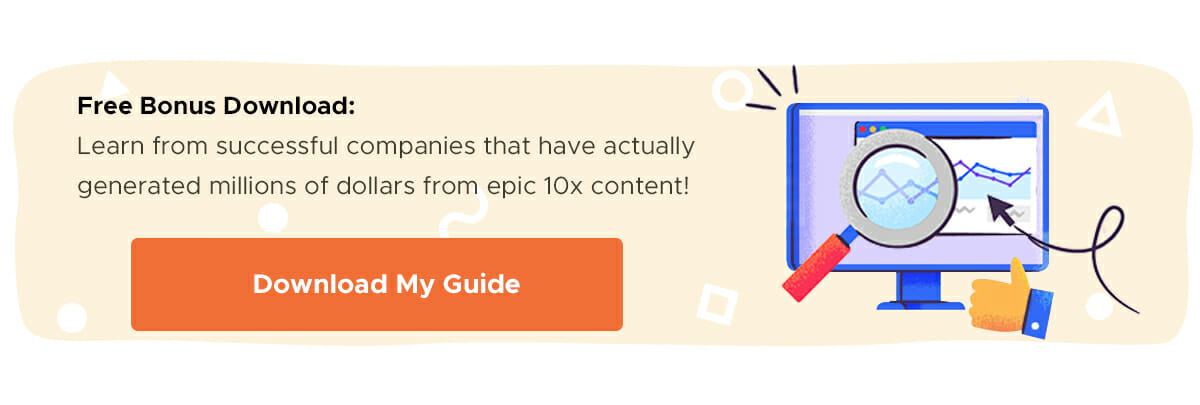Content is no longer king.
Nowadays, interactive content is the boss, with 93% of marketers rating interactive content as highly effective at educating prospective customers:

Today’s online shoppers want to interact with brands. They want to actively engage with products and services before making a purchase.
Consumers want to see product images, watch videos, and play around with different types of interactive content to get a feel for what it would be like to purchase a product or service. Share on XIn this post, we’re going to show you how to make interactive content work for your business.
Let’s dive in!
TABLE OF CONTENTS:
What Is Interactive Content?
Interactive content is any type of content — such as calculators, assessments and interactive infographics, white papers and videos — that requires and encourages users to actively engage with it rather than passively consume it.
Over the years, there has been a litany of sources pointing to the supposed decline of the human attention span, putting us below the reputedly absent-minded goldfish. While many people bought into the concept of the eight-second attention span, the BBC and Ceros have since ripped the theory to shreds:
“Think about it. If our attention span is really 8 seconds, how are Netflix binges a thing? How was the hit of the summer a 45-minute long music video? Why are more people spending longer hours playing video games?”
Whatever your opinion on that matter, something we do know for sure is that modern-day consumers love interactive content, as proven by these stats:
- Visual content is 40x more likely to be shared on social media — and it increases conversion rates by 86%.
- 360-degree videos are watched 28.81% more, and double the viewers watched the video to 100%.
- People spend 4x as much time watching live videos than pre-recorded videos.
The Benefits of Using Interactive Content
As any good marketer would ask: Is interactive content worth the hype?
The short answer is yes.
Here are three good reasons why you should use interactive content in your marketing strategy:
Generate Higher Engagement Rates
80% of online users will watch a video, but only 20% will read the content.
Interactivity not only enhances conversions to 40-50%, but people just love to share cool, unique interactive content pieces, by as much as 28%:
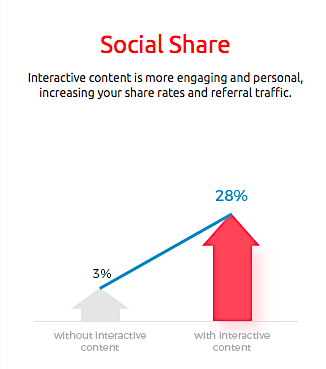 Even the most basic types of interactive content can elicit a reaction, which immediately makes it more engaging than a written article — even a well-written one.
Even the most basic types of interactive content can elicit a reaction, which immediately makes it more engaging than a written article — even a well-written one.
William Comcowich, CEO of CyberAlert, believes that:
“Content marketing is becoming less about the words you put on a page, and more about the experiences you create for the consumer.”
Competition is fierce, across all industries, and in all niches. Standing out isn’t easy, which makes it all the more important to optimize your content so that it offers a more engaging, immersive experience.
Quite often, brands offer interactive content as a lead magnet to collect email addresses. The people who subscribe to this tend to have a genuine interest in the brand. Therefore, they are more engaged and more likely to convert.
Related Content: How to Use Engagement Marketing to Acquire More Customers
Capture More Data
This is the data-driven age, in which the data we collect about online users is arguably the most valuable information for marketers. The more data you get — and the more accurate and relevant it is — the better you can optimize your marketing campaigns.
The problem for many companies is finding effective ways of getting data in a way that people trust and respect.
Data breaches like the Facebook/Cambridge Analytica scandal have damaged the world’s trust in big corporations, making people cautious about sharing personal information online:
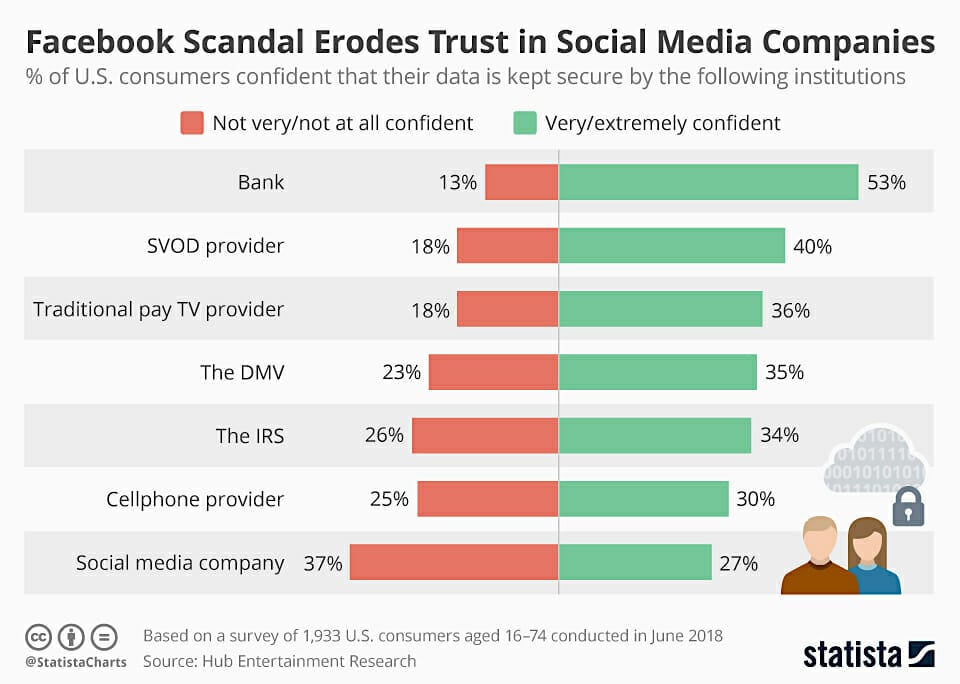
So how can interactive content help?
When you create immersive content that grabs a person’s attention and offers a personalized experience, you’ll find it easier to persuade people to provide their info. Users will enjoy the experience, and you will get valuable data for lead nurturing.
Increase Brand Loyalty
Quizzes, polls and surveys are a few examples of interactive content that you can use to capture lead data which, in turn, enables you to create personalized content. Follow the E.A.T. Principle to establish yourself as an expert:
- Expertise: the page needs to have quality content written by an expert writer
- Authority: the site itself needs to have some authority on the subject
- Trustworthiness: the site needs to have other authoritative links pointing to it from trusted sites
As you gather data through interactive content, you learn more about your audience, making it easier to create content they will love. This approach to highly targeted content marketing will soon establish trust and authority, so you can grow a bigger audience of people that come back time and time again.
Top 12 Best Types of Interactive Content
The benefits of interactive content are quite clear: It’s highly engaging for online users and acts as a powerful medium for marketers to collect valuable data for lead generation. Over time, these data insights will guide your content marketing efforts, helping you win loyal brand advocates.
With that in mind, it’s time to answer the all-important question: What are the best types of interactive content?
1) Interactive Infographics
Today, 40.2% of marketers say that infographics are the best visual format for audience engagement — more than videos, presentations, and data visualizations.
Pretty impressive. Just a few years ago, in 2017, infographics were merely considered the most shareable form of content. But these days there is much more competition, as just about everyone is creating infographics, so just publishing an infographic isn’t enough. Instead, you have to involve users by making including interactive content in your infographics.
Creating interactive infographics will demand more time and effort, but the pay-off is worth it, as you’ll have compelling content pieces that attract more attention and generate more social shares.
Don’t believe us? Take a look at these examples of interactive infographics and try telling us they aren’t engaging!
It doesn’t matter if you’re a fan of this iconic band or not, this infographic is a fantastic example of interactive content that is both fun and educational.
You can play around with the various elements to learn all about the band members and their contribution to writing the many hits that made The Beatles so famous.
2) The Daily Routines of Creative People
Feeling confused about how to structure your day? This interactive infographic (which is shareable but not embeddable) shows the daily routines of some of the world’s greatest minds in history.
You can filter each category by clicking on the little colored squares at the top (“sleep,” “creative work,” “day job/admin” and so on) to figure out when these inspirational artists focused on creative work when they exercised, and how much sleep they got (or didn’t get!).

3) Metoomentum
The trending hashtag #MeToo exploded across the globe between late 2017 and early 2018, encouraging millions of women to speak out about their experience of sexual assault.
This interactive infographic (also shareable but not embeddable) charts the growth of the movement as well as the intertwined network of tweets and conversations. Everything is cleverly represented in the form of a dandelion, with each seed showing an individual tweet.
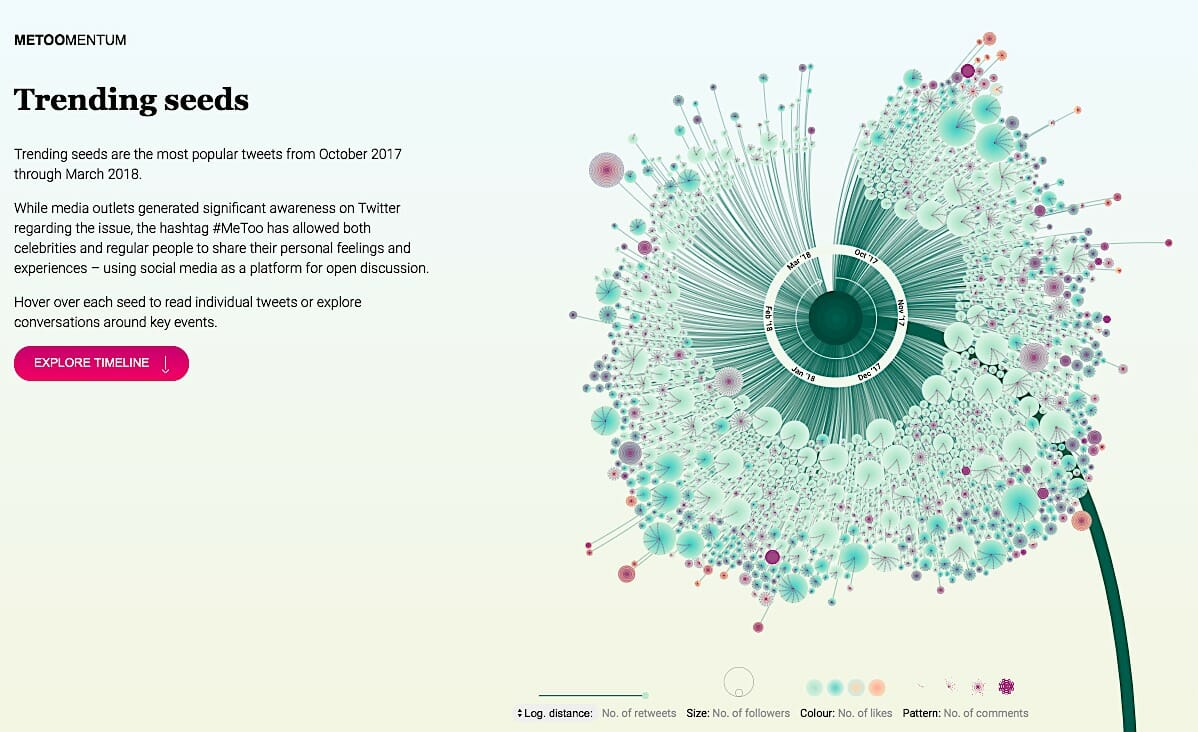
Related Content: Why Infographics Are the Best Content Investment You’ll Ever Make
2) Interactive Video
According to Wyzowl, 85% of marketers use video as a marketing tool, surging from 61% just four years ago:

As Ann Handley, Chief Content Officer of MarketingProfs puts it:
“Video is more than something we can watch, leaning back in our chairs. It’s also increasingly something we can interact with – leaning forward, and engaged.”
So what about interactive video content?
Video is, by design, an immersive experience, making it one of the easiest types of interactive content to use in marketing. Video gives marketers creative freedom with their brand messaging, and lets them engage consumers in ways that text or still imagery can’t accomplish.
The report from Wyzowl revealed that interactive video is on the rise, with 21% of video marketers planning to include interactive video in their 2020 video marketing strategy, compared to 20% in 2018. More to the point:
When a viewer is interacting with a video, their attention stays in the content, resulting in a 591% lift in user activity.
Let’s take a look at some successful examples of interactive video content from the past year.
This music video from Major Lazer depicts a shy boy with a passion for dancing, hoping to win the girl of his dreams. The video has an interactive element, allowing viewers to click the screen to switch between “reality” and “dreams,” where you can watch the story unfold.
BBC Scotland created an immersive 360° video, focused on the valley of Glen Coe. This spectacular landscape is worth checking out, and this interactive video highlights why Scotland is often lauded as one of the most beautiful countries in the world.

Related Content: 12 Engaging Types of Video Content that Viewers Love to Watch
3) Polls and Surveys
Polls and surveys are some of the most commonly used types of interactive content, especially on social media. You can quickly set them up, and gear them to collect useful information from your audience, such as:
- Consumer feedback on your content, products, services or customer service
- Audience insights, including names, addresses, location, interests, etc.
- Purchasing preferences, like industries, favored brands, item categories or pricing
In case you’re wondering what the difference between a poll and survey is, let us clarify things:
A poll consists of only one multiple-choice question, while a survey contains multiple questions.
On a website, polls are generally situated on the lower part of the screen and are very discreet, requiring minimal interaction so they can quickly be completed. Surveys are more complex and require greater interaction.
As one of the oldest interactive content types around, polls and surveys have stood the test of time because people see them as unobtrusive, enticing and fun to complete.
The trick here is not to ask too much, as you may deterring people, and therefore wind up getting nothing at all. Check out the examples below to get an idea of what a successful survey looks like:
1) Netflix
Over the last decade, Netflix has evolved from a simple DVD delivery service to a tour de force in streaming content. At the heart of its success is fantastic marketing, which relies heavily on user feedback.
This interactive survey was featured in the brand’s email marketing drive, helping them gain the insights needed to improve the streaming content:
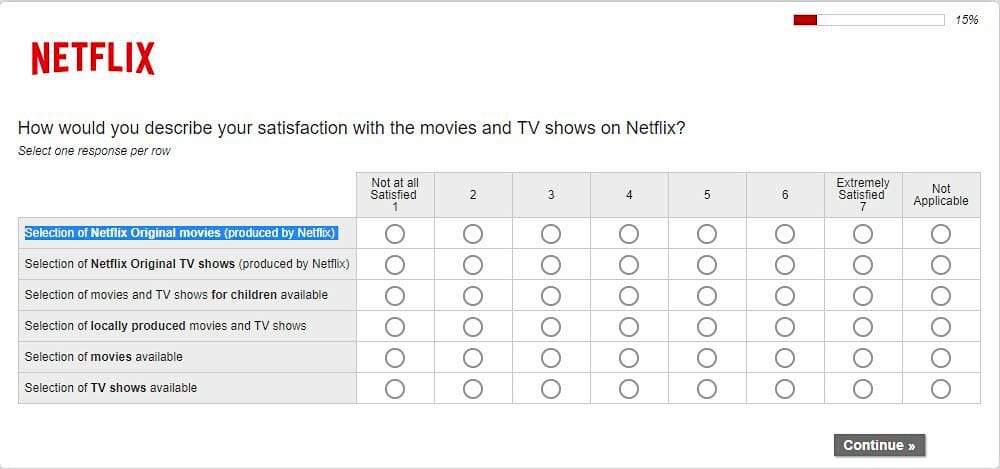
If you want to see an example of surveying done right, look no further than Hilton Hotels. After every survey, Hilton conducts thorough data analysis, and then they react by taking consumer views on board. As a result, they now get a response rate of at least 30% on their surveys and their abandonment rate fell by 6% in a year:
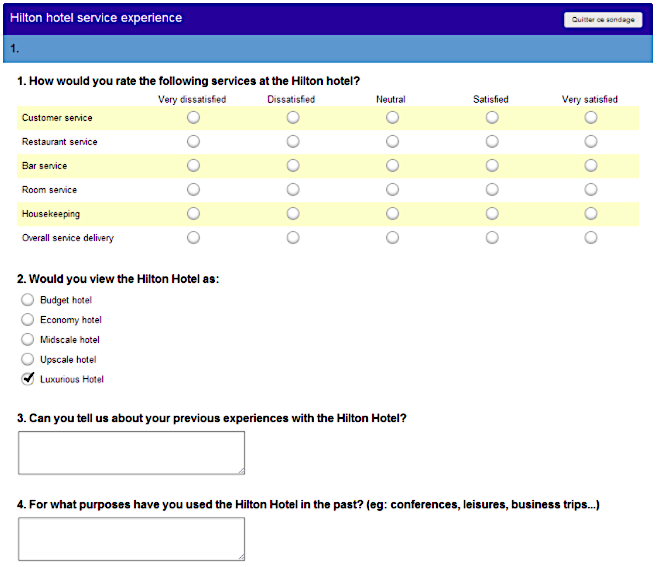
4) Calculators
Interactive calculators are built to solve specific problems and provide immediate answers – giving users instant gratification. The nature of this design makes this type of interactive content perfect for lead generation, as it can provide quick wins for people in the middle stage of the buyer’s journey.
If a consumer is weighing their options, an interactive calculator might offer the insight into ROI or savings that they need to make the decision to purchase.
What’s great about interactive calculators is that they demand little effort from the user. Yet, in return, they offer pure data and zero fluff, giving users precise results on which to base their decision-making.
Below are two examples of successful calculators that delighted users and drove more leads for those who implement them:
1) HubSpot – Ads ROI Calculator
In paid advertising, nobody wants to throw their money away. Thanks to HubSpot, you can get clear projections on what kind of ROI to expect from your efforts.
Just enter your estimations for aspects like your monthly budget, targeted conversion rate, average sales price, and then the calculator will do the rest:
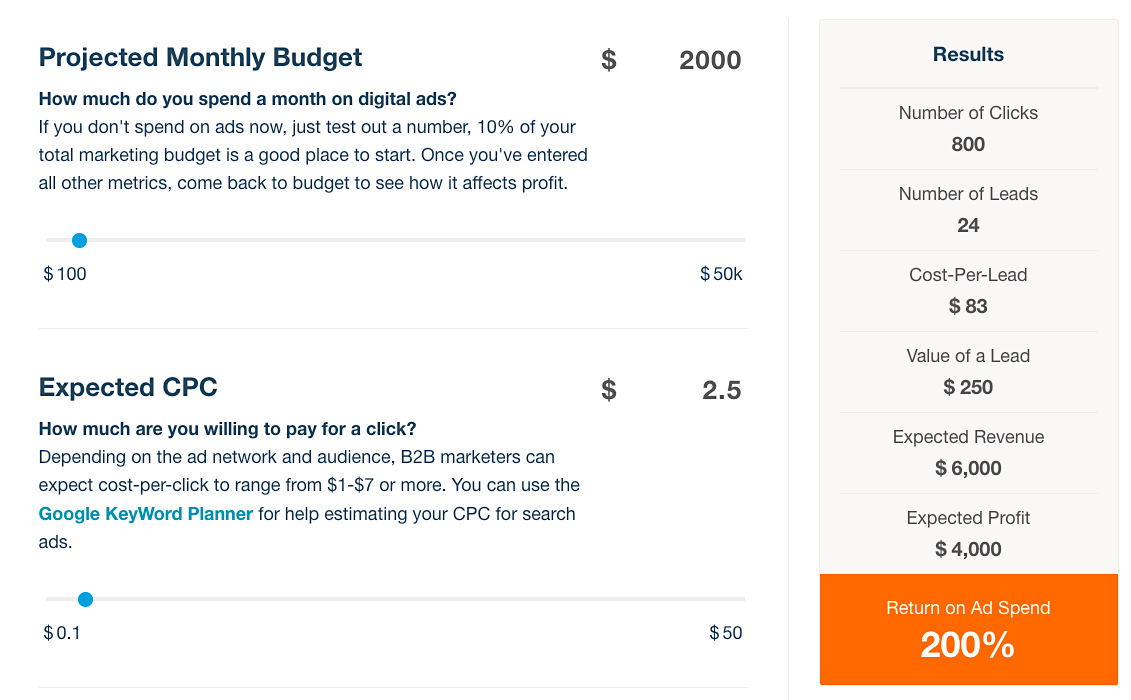
The results are broken down to offer insights on key metrics, including:
- Number of clicks
- Number of leads
- Cost per lead
- Value of a lead
- Expected revenue
- Expected profit
- Return on ad spend
With an interactive calculator like this on your site, you can glean insights about what users are trying to solve, whether it be a low budget, high costs or poor conversion rate.
2) Quartz at Work – How Much Is Your Job Offer Actually Worth?
Landing a new job is exciting – until you realize that you’ve accepted a salary that’s not all that great. Quartz at Work offers a simple calculator to help put a value on your time by taking into consideration salary, stock options, retirement accruals, and other job perks.
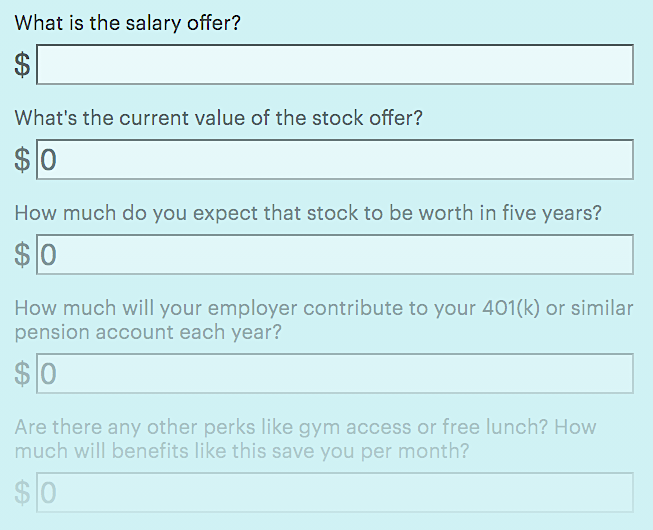
3) Single Grain’s Marketing ROI Calculator
Digital marketing agency Single Grain provides a handy marketing ROI calculator. Simple questions like “What is your average monthly traffic?” and “How many leads do you generate from your website every month?” will allow you to see some valuable metrics around your business.
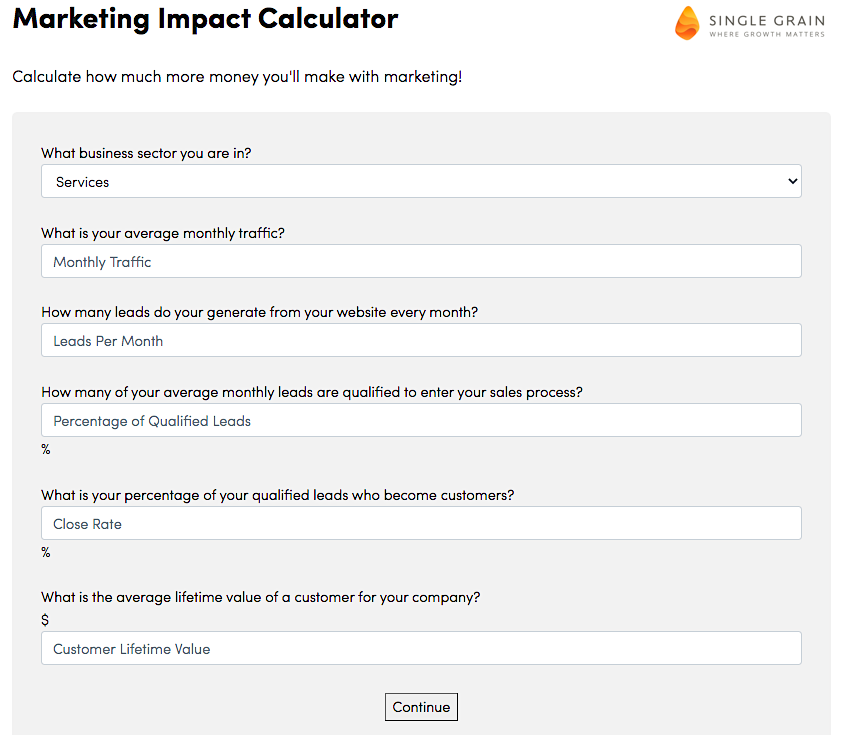
Related Content: 5 Ways to Re-Engage Those Long-Lost Customers
5) Assessments
An assessment is a type of interactive content in which the user answers multiple questions in exchange for valuable insights based on the topic matter of the questions. It’s an objective form of getting quality feedback.
By its very nature, assessments allow creators to get plenty of information about the user. Interestingly, assessments are the most appreciated form of interactive content – regardless of what stage of the buyer’s journey the user is at – so this works out well for both parties.
Here are some examples of assessments:
1) Trunk Club
Trunk Club uses an interactive assessment to help men build a great wardrobe for any occasion. Users complete a style profile assessment by working through the questions to give their personal stylist a sense of their style and budget.
After the assessment, people can communicate directly with the stylist before reviewing items and making purchases.
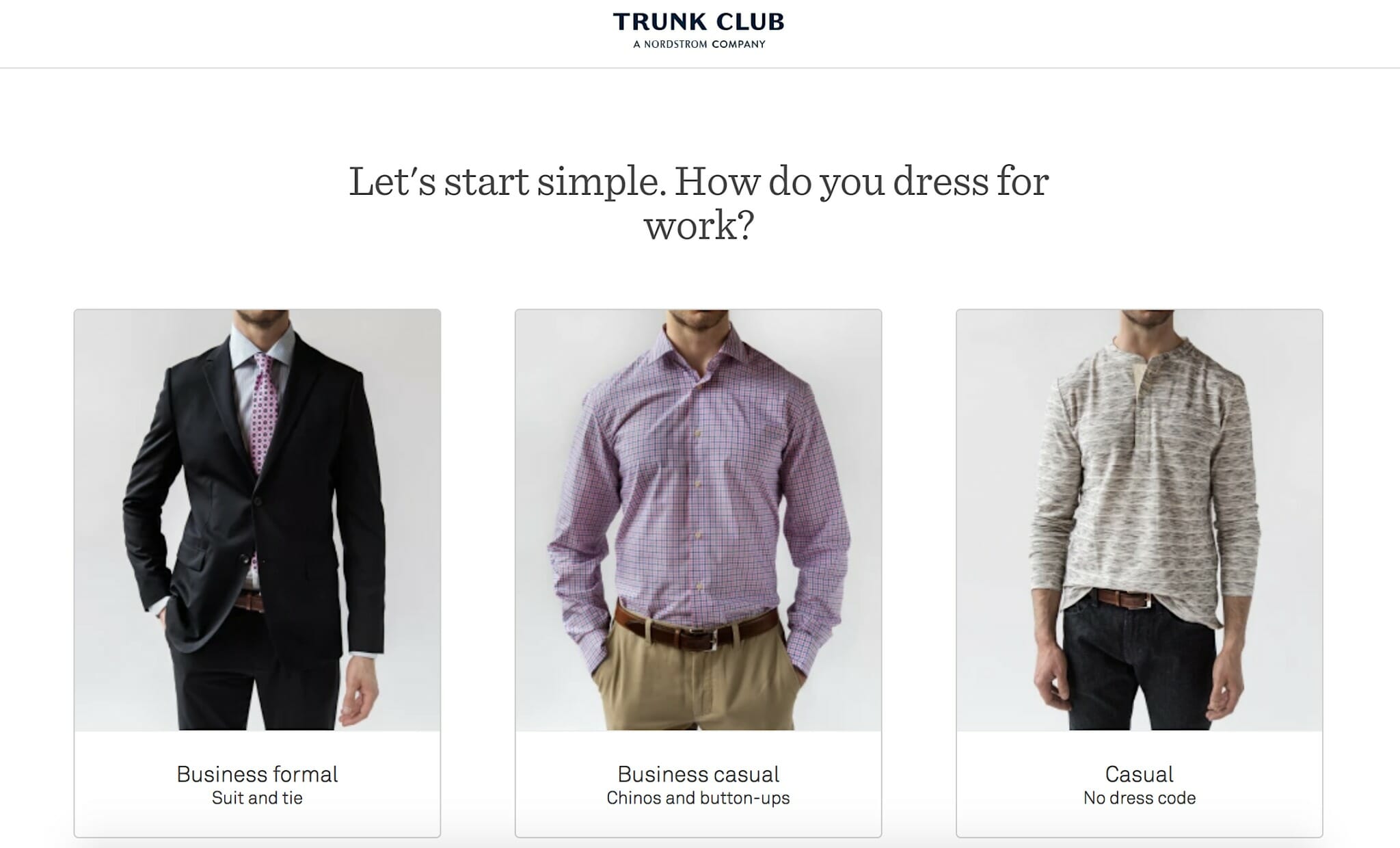
If you’re having doubts about your inbound marketing strategy and whether it will have the impact you hope for in the year ahead, perhaps you should check out this tool from SmartBug.
The 15-minute assessment is a savvy use of one of the best types of interactive content, as it helps users look inwards at their marketing efforts, and helps SmartBug learn a lot about their leads.
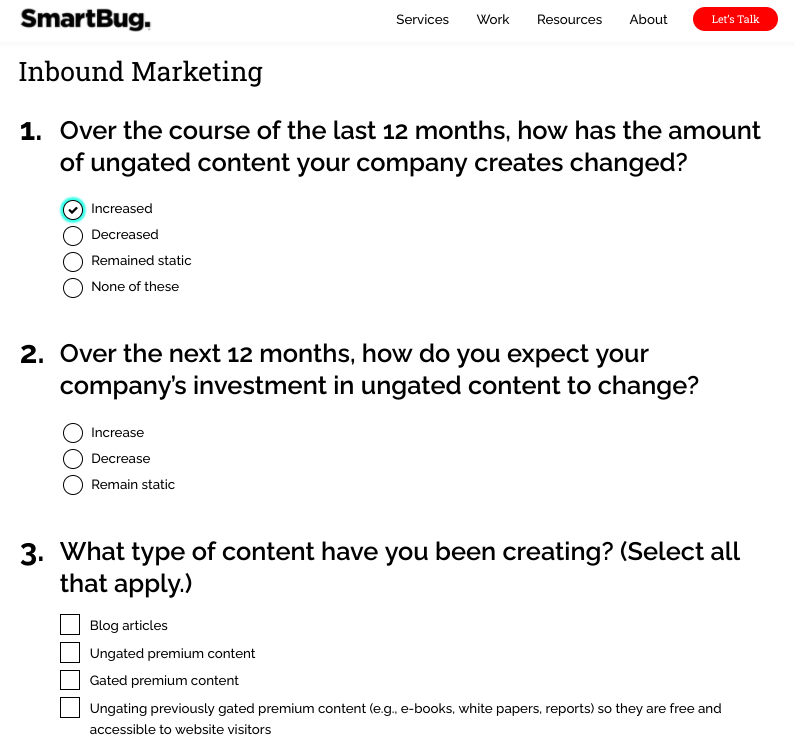
6) Interactive E-books and White Papers
Next up are two types of interactive content that don’t get as much limelight as flashy infographics or video marketing: white papers and e-books.
E-books and white papers pack an abundance of information into a concise, compact design. But therein lies the problem, as modern-day consumers want an easy ride to instant gratification.
Is that the death of these long-form text-heavy behemoths of content marketing? Perhaps not yet.
The Content Marketing Institute found that 50% of B2B marketers ranked white papers in their top three channels for lead generation and sales. And 76% of buyers were willing to hand over their information in exchange for a white paper.
So if you can make interactive e-books and white papers, you take valuable pillar content pieces and immediately supercharge them to be more engaging, more fun and more shareable.
Take a look at how these brands succeeded when using these types of interactive content:
1) EIF
The EIF (European Investment Fund), which supports entrepreneurship and innovation, and has been financing small businesses in the EU and beyond for 25 years, put together what could have been a very dry white paper.
Instead, they turned their annual report into a colorful, interactive paper with catchy illustrations that is easy to skip around to different sections by clicking on the tabs along the top.
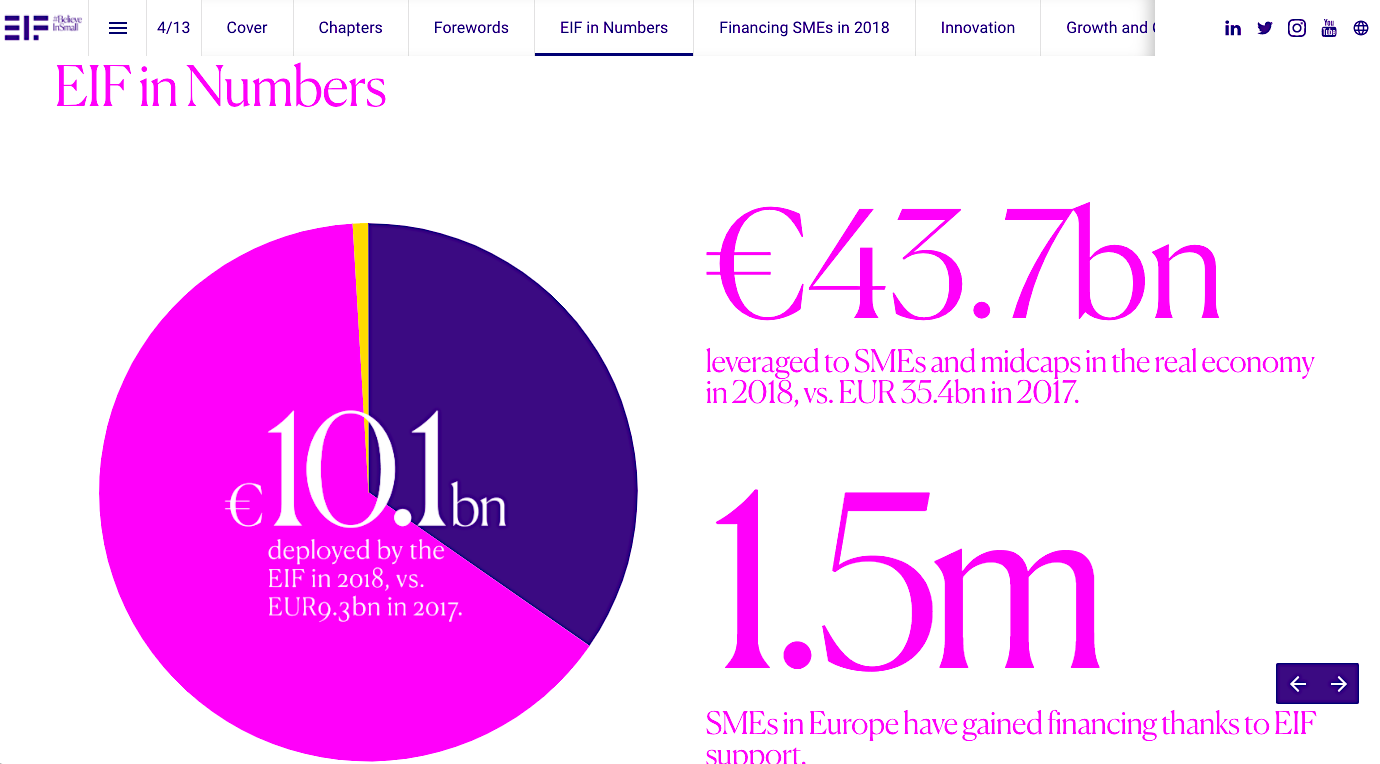
2) CodinGame
White papers have a reputation as being dull. It’s certainly possible for a highly technical document to turn into a snoozefest, especially when compared to shorter, more engaging types of content.
CodinGame did a great job on this interactive white paper, using animated charts and a slick design to break up all the information in a way that makes the document highly-readable and inviting.
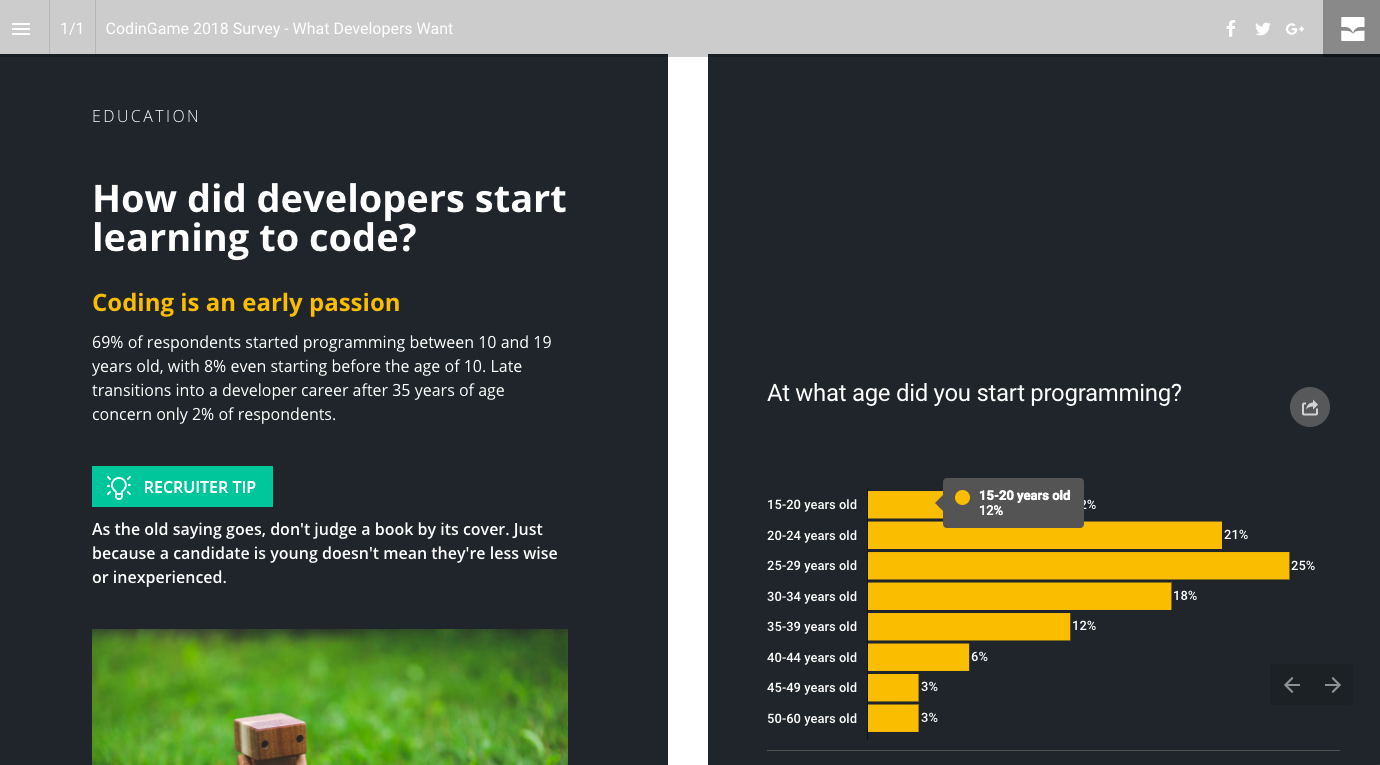
Related Content: How to Boost Lead Generation and Authority with White Papers
7) Interactive Emails
In a post about the best types of interactive content, you may be surprised to find that email making an appearance. You may even think that good ol’ email is surely being sent out to pasture while innovative marketing technology takes over.
But you’d be wrong.
See, email has a unique value in that it allows you to communicate directly with people on a one-to-one basis, rather than as part of a public broadcast message (as in social media).
This inherent intimate design gives email an edge, even in the rapidly evolving digital landscape. Sure, it has its flaws, but email is not dead yet. Why? Because – you guessed it – we can make email interactive.
You can include interactive elements in your email, such as embedding videos, polls, charts, games and more to drive better open rates and engagement.
Campaign Monitor reports that:
Interactive email content boosts the click-to-open rate by up to 73%, and adding videos can increase click-through rates by as much as 300%.
Here are a couple of examples of interactive emails done right:
1) Tom Raffield – Furniture Designer
This interactive email from Tom Raffield uses gamification by asking recipients “Can you guess where we are going?” and then providing them with some clues. Recipients can use their mouse to roll over each clue and then reply with their answer.
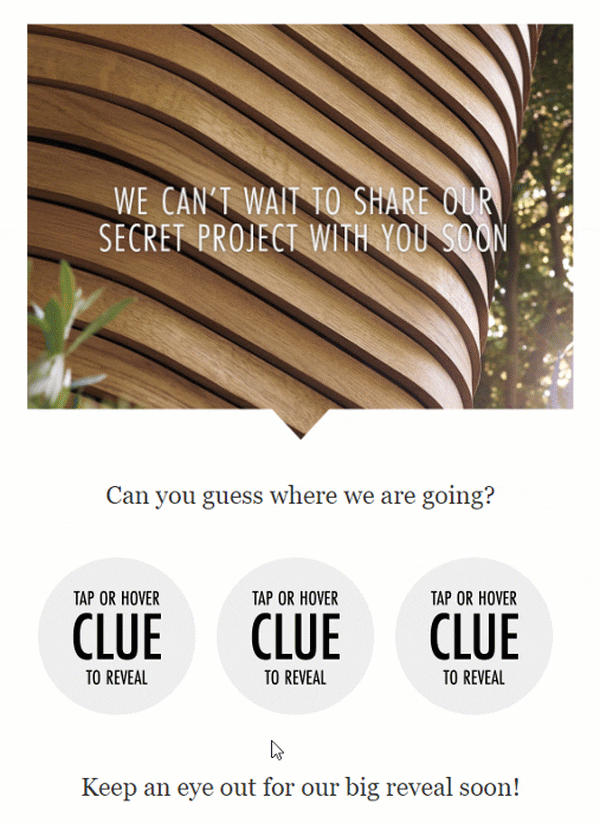
This retail sports giant cleverly uses tooltips in this email, allowing recipients to get more information about training with a simple rollover on the “plus” icons. This interactive element is easy to add, yet it makes the email fun and refreshing compared to simple text emails.
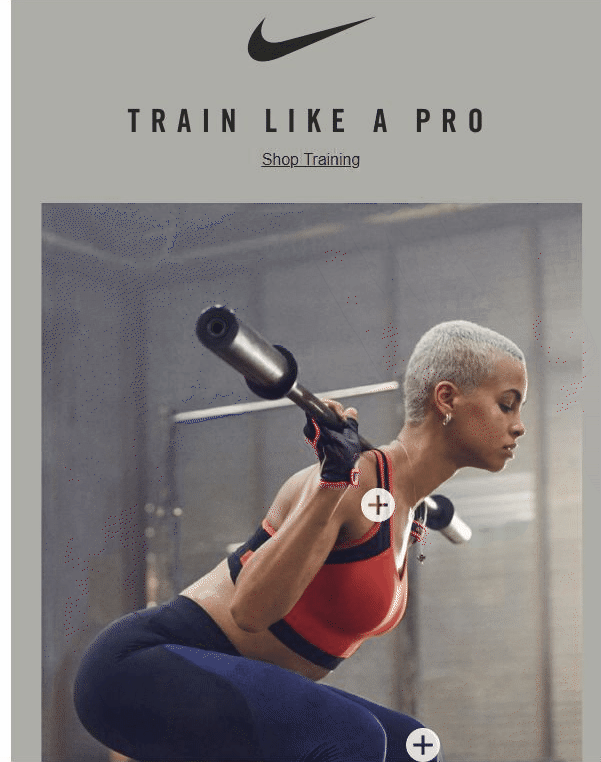
Related Content: How to Get More Responses From Your Cold Emails
8) Product Recommendations
ConversionXL defines recommendation engines as:
“Information-filtering tools that use algorithms and data to recommend the most relevant items to a particular user in a given context.”
Nowadays, virtually every online shopper uses some form of product recommendation engine. If you’ve ever been on Amazon, you’ve definitely used one – even if you didn’t realize it:
The retail juggernaut attributes a significant portion of its income to personalized product recommendations, which are driven by artificial intelligence and machine learning-based algorithms:
35% of Amazon’s revenue is generated by its recommendation engine.
So how can marketers create their own interactive product recommendation tool? The good news is you don’t have to have the resources of Jeff Bezos to do it, nor does it have to be a massive task that takes months to launch.
Here’s the secret: An interactive product recommendation engine is really just a quiz, cleverly crafted to direct people to your products and services.
Look right here to see how it’s done:
1) Pete & Pedro: Men’s Hair Styling Aid Tool
It’s not always easy to pick the right styling product. With this interactive tool from Pete & Pedro, you can quickly find the right product for you, based on your answers to a few short questions about your favored style, shine and hold.
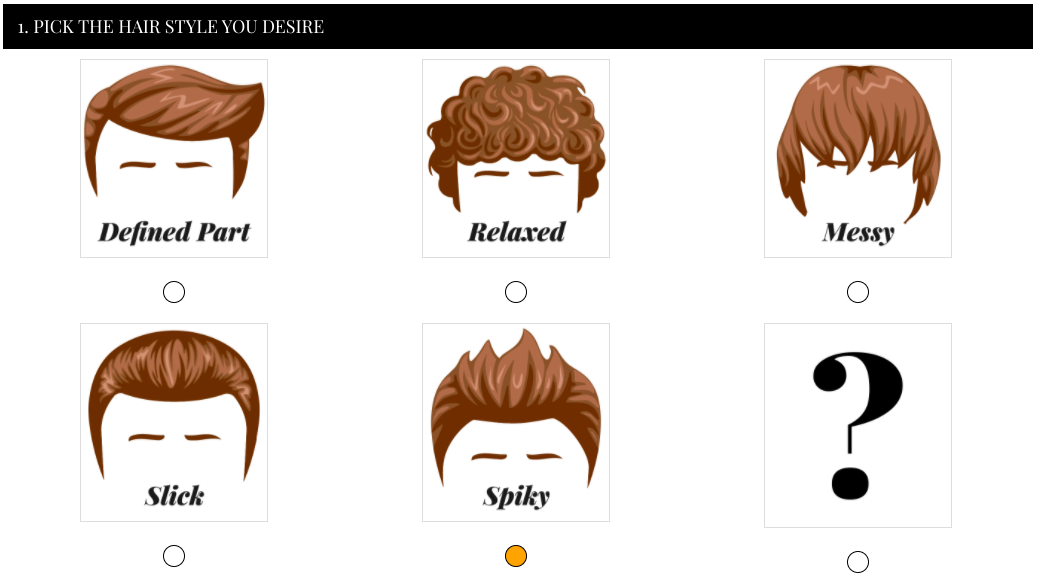
This bike manufacturer wanted to reach customers in a more personal way. When they teamed up with Macroscape, the marketing consulting firm turned to interactive content to drum up interest in the bicycle brand.
These interactive product recommendations make the shopping experience more enjoyable and immersive, which is great for consumers. It wasn’t too bad for Brooklyn Bicycle Co. either, as the campaign generated a 36% bump in conversions!
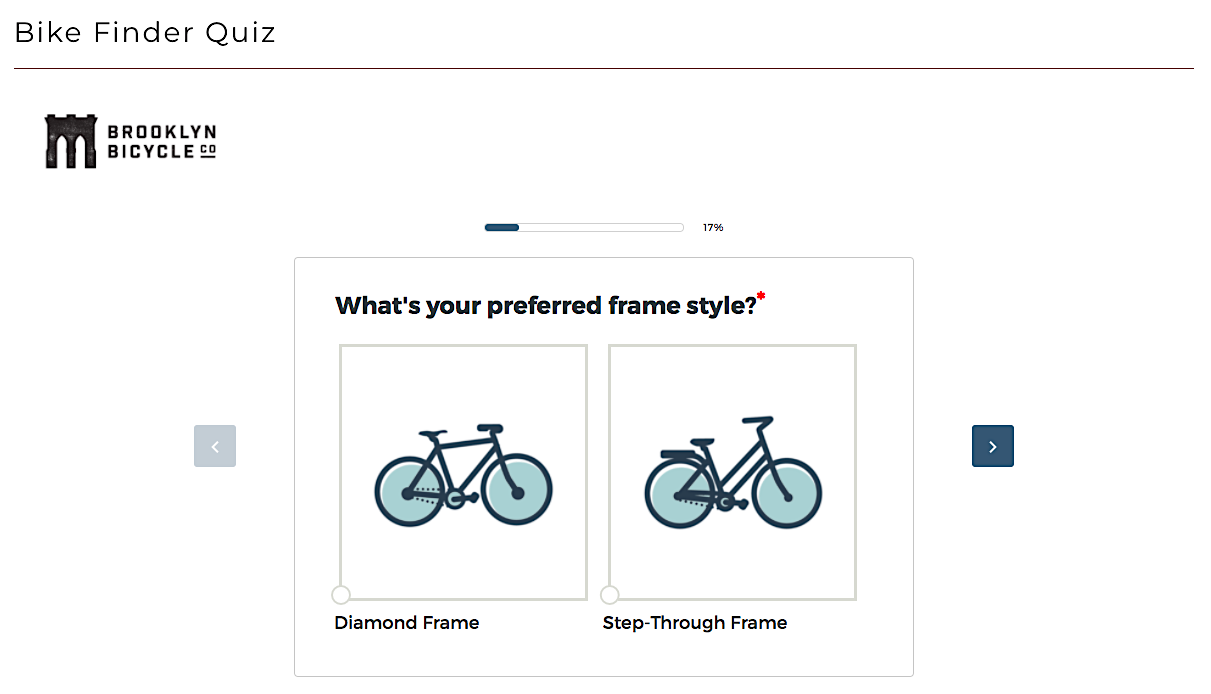
Related Content: Make Your Product Sing: The Importance of UX Writing
9) Data Visualizations
Did you know that the human mind can process an image 60,000 times faster than text?
We’re visual creatures, and marketers can leverage that to their benefit by taking something hard to digest – like vast chunks of data – and turning it into something aesthetically captivating…like a colorful visual report.
Here are some great examples of this.
The “selfie” craze is so massive that Selfiecity.net decided to conduct a very in-depth international study about it. After collecting 3,840 selfies from participants in New York, São Paulo, London, Berlin, Moscow and Bangkok, the website published a data visualization report.
You can use the filters in this interactive content to narrow down the results. In the image below, the city filter is simply set to “New York City” (640 out of 3,840 selfies were taken). You can add the age or gender filter to further narrow the results down, or drill down as specific as pose and mood.
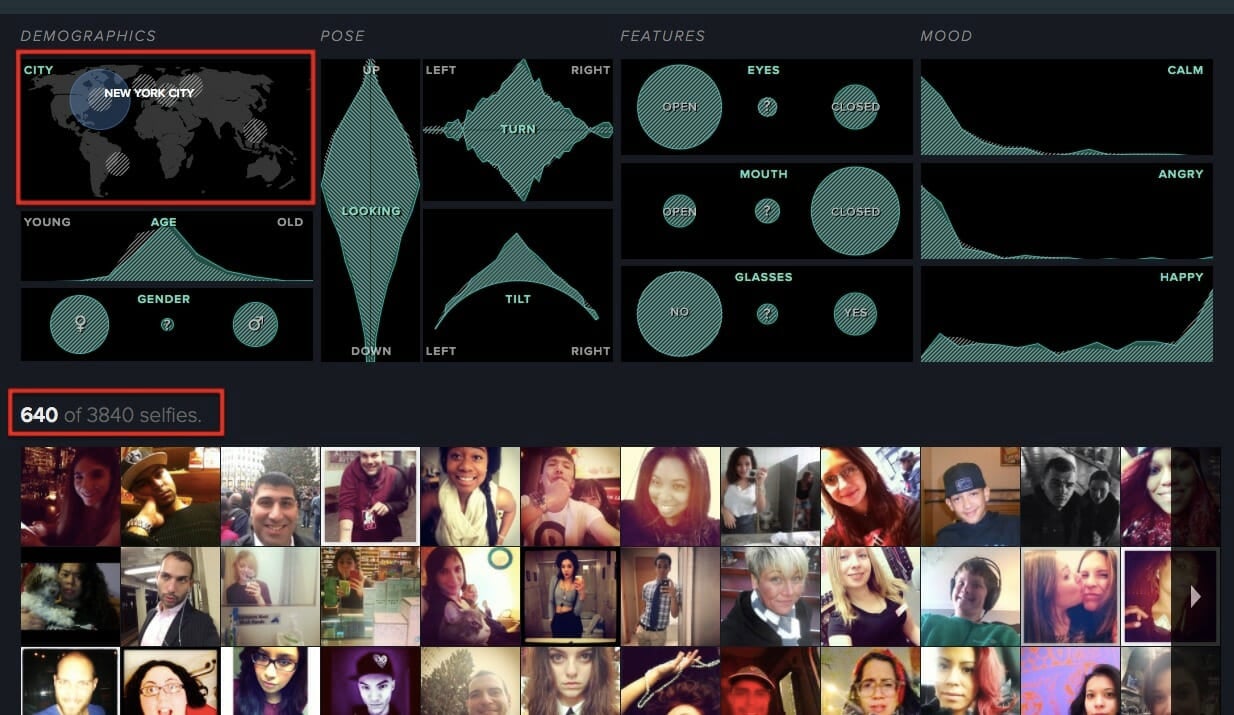
10) Diagnostic Tools
If you’re in the business of selling software, automated diagnostic tools are one of the best types of interactive content you can offer your audience.
Whether it’s a freemium version of your SaaS product or a bare-bones grading tool that evaluates a specific element of your prospects’ website, diagnostic tools are excellent for three reasons:
- They are authoritative, as they give people valuable data insights they can use.
- They instill trust, as people put great faith in their outcomes.
- They are easy-to-use, which keeps people coming back.
Here are a couple of popular interactive diagnostic tools you may have come across in the SEO realm:
In search engines, your headline is the bait that tempts people to click through to your website.
This interactive tool from the Advanced Marketing Institute gauges the emotional vs. intellectual impact of your headlines. It’s an excellent tool for crafting compelling headlines – and it’s also a little bit addictive!
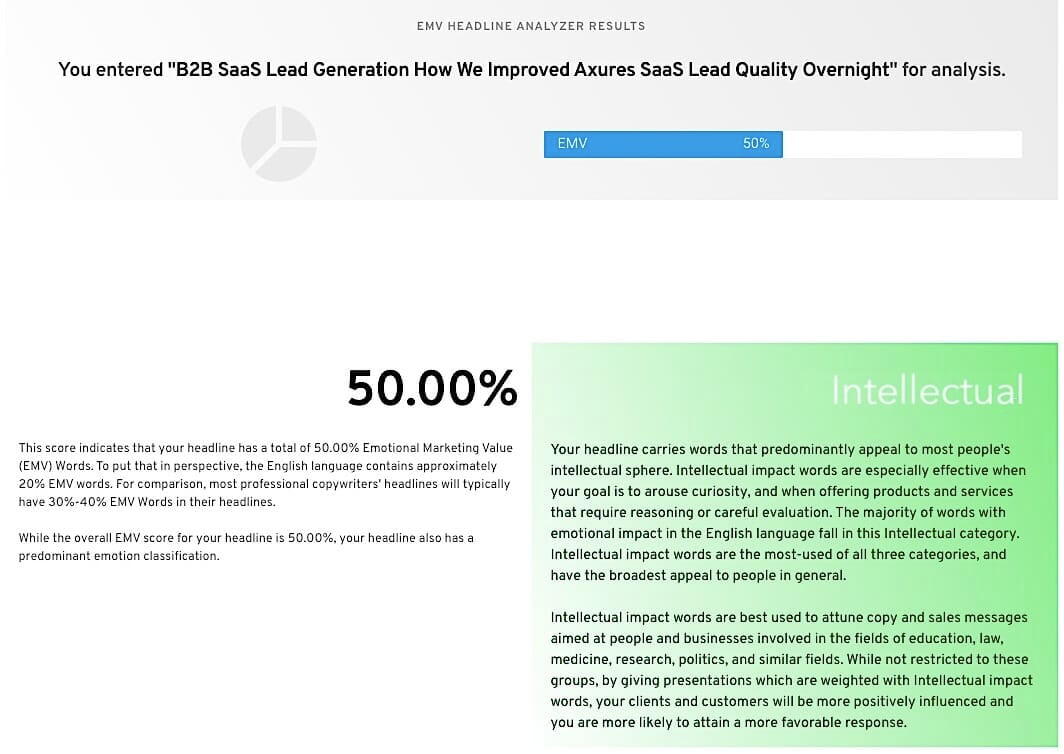
This tool from Moz was once known as Open Site Explorer. While the moniker has changed, the premise has not. Just type in your website domain, and then you can access regularly updated information about your website’s backlinks.
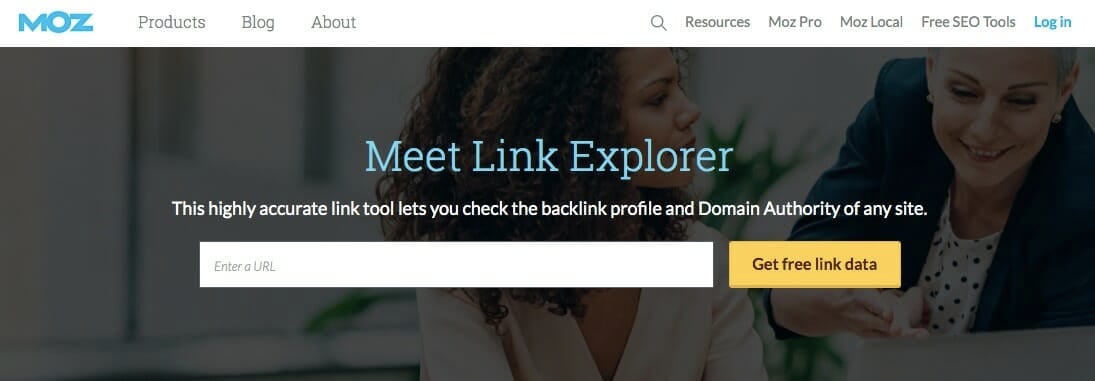
11) Contests
Who doesn’t love a good contest?
If you have prizes that people want, and an audience that will share your campaign, a contest can be one of the best types of interactive content. Not only will it grow brand awareness and engage the masses on social media, but it may also help you acquire lots of new email subscribers and potential new customers.
Brands have been running simple contests on social media for years, asking people to like, comment or share posts to enter. Now, with video, you can make contests a more interactive experience that thrives on user-generated content (UGC).
61% of people are more likely to interact with ads if they contain UGC.
Here’s a successful example:
Chubbies – a company that makes short shorts for men, “specifically, for Magnum P.I. aficionados and frat bros” – turned to UGC for this contest.
They encouraged men to submit photos of themselves wearing Chubbies shorts, announcing that the winner would get the chance to become a model for the brand. The contest generated almost 300,000 entries, creating a buzz with the many light-hearted, humorous submissions from people of all shapes and sizes.

Related Content: How to Boost Your Website Traffic with a Giveaway
12) Augmented Reality
Finally, we have to mention Extended Reality (XR). It’s not going away, you know. In fact, marketers are only getting started with it.
There are three types of XR:
- Virtual Reality (VR) – where users wear VR headsets to immerse themselves in a virtual world.
- Augmented Reality (AR) – layered graphics on a real-world environment.
- Mixed Reality (MR) – a blending of VR and AR, offering interactive content that people can manipulate.
Let’s take a look at how these types of interactive content in use today.
The average woman spends a lot on beauty products each year – $300,000 in her lifetime, according to beauty e-tailer SkinStore – so she wants to make sure that she’s getting the best products for her needs.
With Sephora’s AR tool, women can try products out without leaving their homes. The augmented reality uses filters to show women what the makeup products will look like:
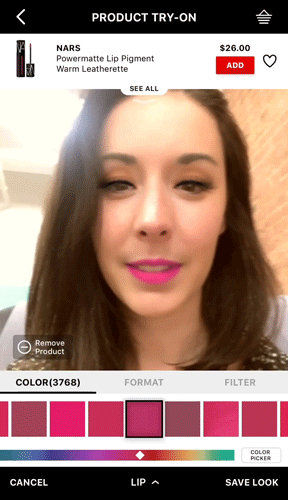
2) Pokémon Go
If we’re talking about augmented reality, we have to mention Pokémon Go. The biggest AR game ever took over the planet in 2016 and has continued to captivate gamers ever since. Who would have thought interactive content based on the idea of capturing make-believe creatures on your smartphone would be so engaging?

Well, it was so popular that the game led to a spate of car crashes because people were so engrossed in the game that they unwittingly wandered into traffic. Reports on the craze revealed that 31 people were injured, and two died. Another two men fell off a cliff in California and survived (yes, seriously – fully grown, adult men were chasing Pokémon!).
We’re not suggesting you create dangerous AR content, just that you make it engaging!
Related Content: A Quick Guide on Combining Virtual Reality and Content Marketing
Final Word on Interactive Content
So, there you have the 12 best types of interactive content for your modern marketing strategy.
Sure, text-based content still has its place, as do emails, e-books, white papers and good old-fashioned blog articles. But the undeniable truth remains: People want to interact with brands, and they want more interactive content and immersive experiences.
And so, content as we know it is set for an interactive makeover.
Additional writing by CJ Haughey.


